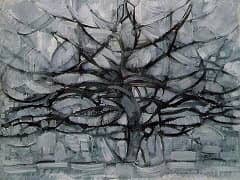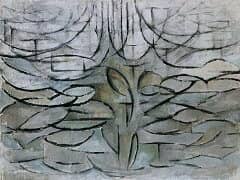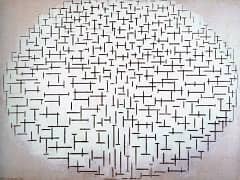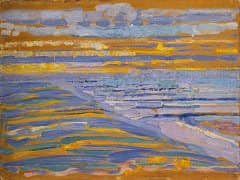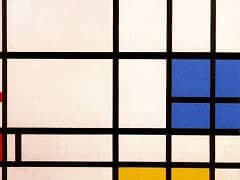Composition No. VII, 1913 by Piet Mondrian
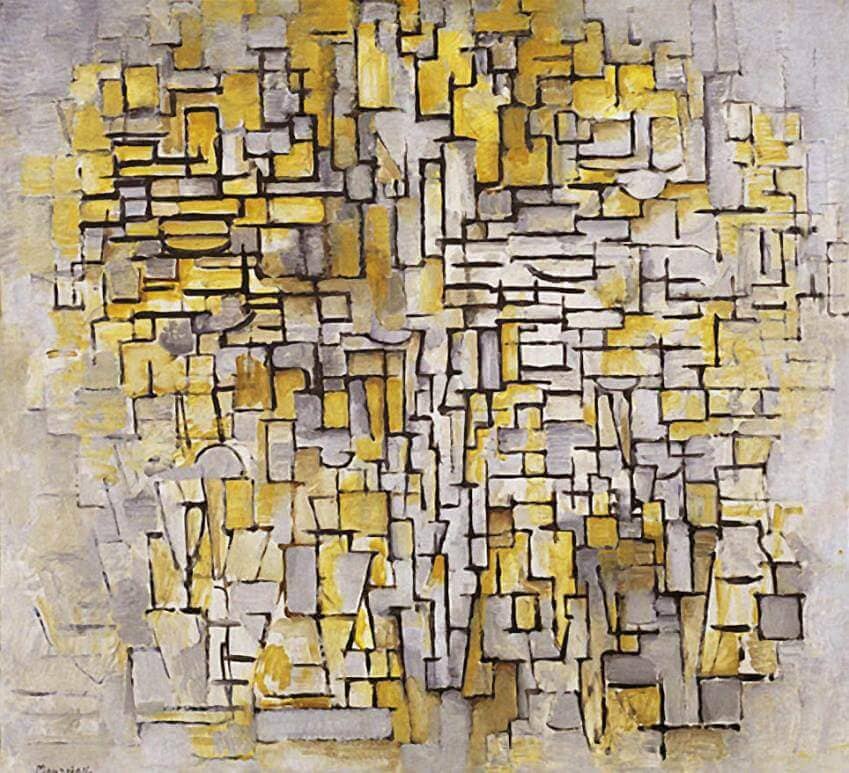
When Mondrian saw Cubist paintings by Georges Braque and Pablo Picasso at a 1911 exhibition in Amsterdam, he was inspired to go to Paris. Tableau No. 2/Composition No. VII, painted a year after his arrival in 1912, exemplifies Mondrian's regard for the new technique. With a procedure indebted to high Analytic Cubism, Mondrian broke down his motif - in this case a tree - into a scaffolding of interlocking black lines and planes of color; furthermore, his palette of close-valued ocher and gray tones resembles Cubist canvases. Yet Mondrian went beyond the Parisian Cubists' degree of abstraction: his subjects are less recognizable, in part because he eschewed any suggestion of volume, and, unlike the Cubists, who rooted their compositions at the bottom of the canvas in order to depict a figure subject to gravity, Mondrian's scaffolding fades at the painting's edges. In works such as Composition 8, based on studies of Parisian building facades, Mondrian went even further in his refusal of illusionism and the representation of volume.
During the war years, Mondrian continued to move toward greater abstraction, rejecting diagonal lines and decreasing his reliance on his favored subjects - trees, seascapes, and architecture. Composition, which developed from studies of a church, is among the last of his works that can be traced to an observable source. Canvases like this make it clear that Mondrian's interest lay foremost in coming to terms with the two-dimensionality of the painted surface. For this work, the artist designed a strip frame (now lost), which he said prevented the sensation of depth created by traditional carved frames.
The inexorable consistency and internal logic of his solutions hint at a larger conceptual principle, which is outlined in great depth in the artist's extensive theoretical writings. Like many pioneers of abstraction, Mondrian's impetus was largely spiritual. He aimed to distill the real world to its pure essence, to represent the dichotomies of the universe in eternal tension. To achieve this, he privileged certain principles - stability, universality, and spirituality - through the yin/yang balancing of horizontal and vertical strokes. His philosophical framework was grounded in the Neoplatonic and Tantric-inspired texts of authors connected to the Theosophical Society, the Dutch branch of which had counted Mondrian as a member since 1909.


